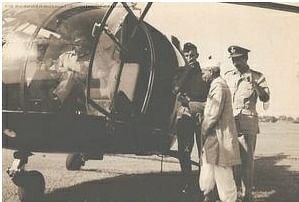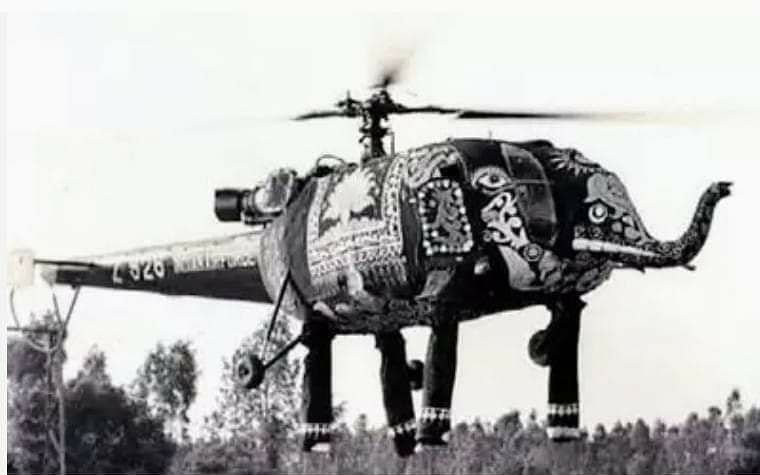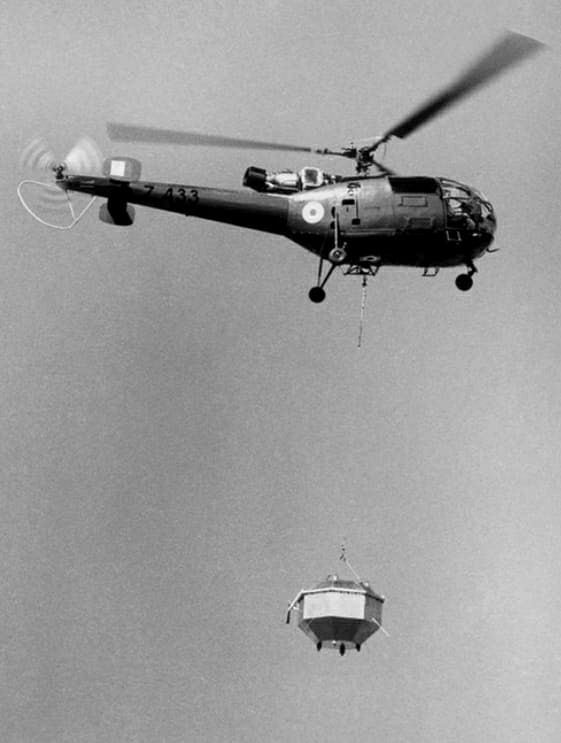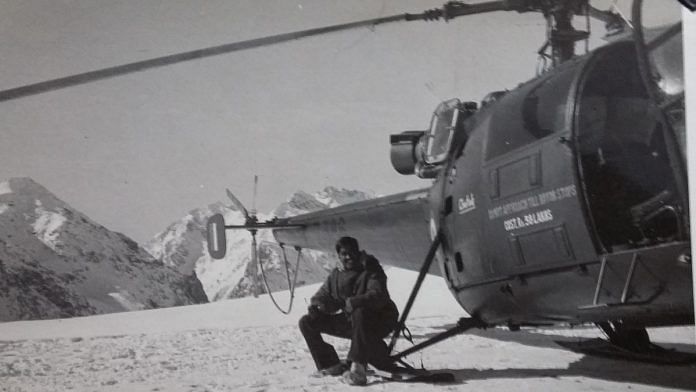There are helicopters in the aviation field, and then there is THE Chetak – the rotary whirly bird with the characteristic whine of its engine and a stubby gleamy face, which was not elegant by any standards. Ubiquitous in Indian skies for the past six decades, the Chetak has a special place in India’s aviation history. Inducted in 1962, it is an ab initio trainer of helicopter pilots at Helicopter Training School, Secunderabad. Its place in history can be gauged from the fact that it has been the backbone of the rotary wing fleets of the three military Services, BSF, many state governments and private aviation companies.
Rugged, nimble, manoeuvrable, reliable, easy to maintain, powerful, easy to fly and so many more adjectives come to mind when one describes a Chetak. In its hey days, it has flown presidents and prime ministers besides saving thousands in flood and disaster relief missions in India and abroad.

Armed with anti-tank guided missiles, the armed versions of the Chetak saw action in Sri Lanka with the Indian Peacekeeping Force, while it went in the quest for peace as part of India’s UN Mission in Somalia in 1993. India’s first satellite, Aryabhata, was underslung by a Chetak in April 1975 for ISRO to check its transmissions. Many young Indians may not know that the Chetak has enamoured thousands along the Rajpath during Republic Day parades in the ’60s and ’70s, decked up as an elephant – with a special cheer coming from children! The Chetak has aided farmers when outfitted with equipment to spray pesticides while another modified version was used to kill locusts in Rajasthan and Gujarat.
Also read: HAL choppers get defence ministry nod in bid to replace Cheetah & Chetak, Kamov hangs in balance
Flying the Chetak challenge
My first tryst with a Chetak was in 1978 when detailed for the helicopter conversion course. The first few sorties were a disaster as the Chetak appeared to have a mind of its own whenever a hover was attempted in one of the five helipads at the Helicopter Training School (HTS) – the instructor could maintain a rock steady position with just one finger on the cyclic (control stick), while in my hands it was like a horse in a rodeo wanting to be in any place but the allotted helipad. Many a kingpin jet jockey, who came swaggering into its cockpit thinking that the Chetak was a lowly flying machine, came down to mother earth pretty quickly when trying to make it hover! But soon, one gets the hang of it and as one gains experience, flying the Chetak becomes a treat.
A treat it is to fly it, but it requires expertise of a high order for operations at the daunting heights of the Himalayas and the Northeast. While the Chetak was the first IAF aircraft to operate over Siachen Glacier, with the first landing on it happening on 6 October 1978, the most challenging operations used to be on a helipad called Track Junction.

While the nearby Daulat Beg Oldie (DBO) is better known, it is Track Jn at 17,400ft – a little higher than DBO – that caused more blood pressure problems in pilots. In the 1960s and ’70s, pilots did not have masks, so oxygen was inhaled through the ‘hookah’ – sucked directly by mouth through a hose. Landing power calculations were an apology as the manufacturer had not catered for the Chetak to operate at those dizzying heights – there are no helipads at such altitudes for the French manufacturer to have designed such capability. With hardly any reserve of power, the Chetak’s approach to land at Track would be a long one, with power being increased gradually till the collective (power lever) was pulled literally into the armpit to get full power and the pilots sucking the ‘hookah’ ferociously to take in maximum oxygen. The Chetak would still be nose up, kicking up a mini dust storm and juddering viciously while trying to stop in that rarefied atmosphere; finally, what would stop it could, in many cases, be attributed to the prayers being muttered by the pilots!
Also read: India’s first pilot to land on Siachen recounts how his life was saved by Army comrades
Deserving of our salute
Jokes aside, the aircrew who operated there had the feel of the Chetak, and she responded to their gentle nudging and control inputs faithfully, with very few accidents, for the first three decades it operated at those heights. Repeated overhauls, life extensions and issues of servicing at HAL took their toll, and Chetak operations got restricted to 10,000 feet – and so they have been the last three decades.

And as the IAF commemorates this lovely machine on its 60 years in India with functions at HTS on 2 and 3 April, we must acknowledge its stellar role in saving lives, delivering relief material, transporting passengers and serving the defence forces – in Hindi there is a word for it, harphan maula, someone who is adept at doing many tasks. Surely, the Chetak has delivered handsomely in the service of India and deserves our salute.
AVM Manmohan Bahadur was a Chetak pilot in the Indian Air Force and former Addl DG, Centre for Air Power Studies. Views are personal.
(Edited by Neera Majumdar)






